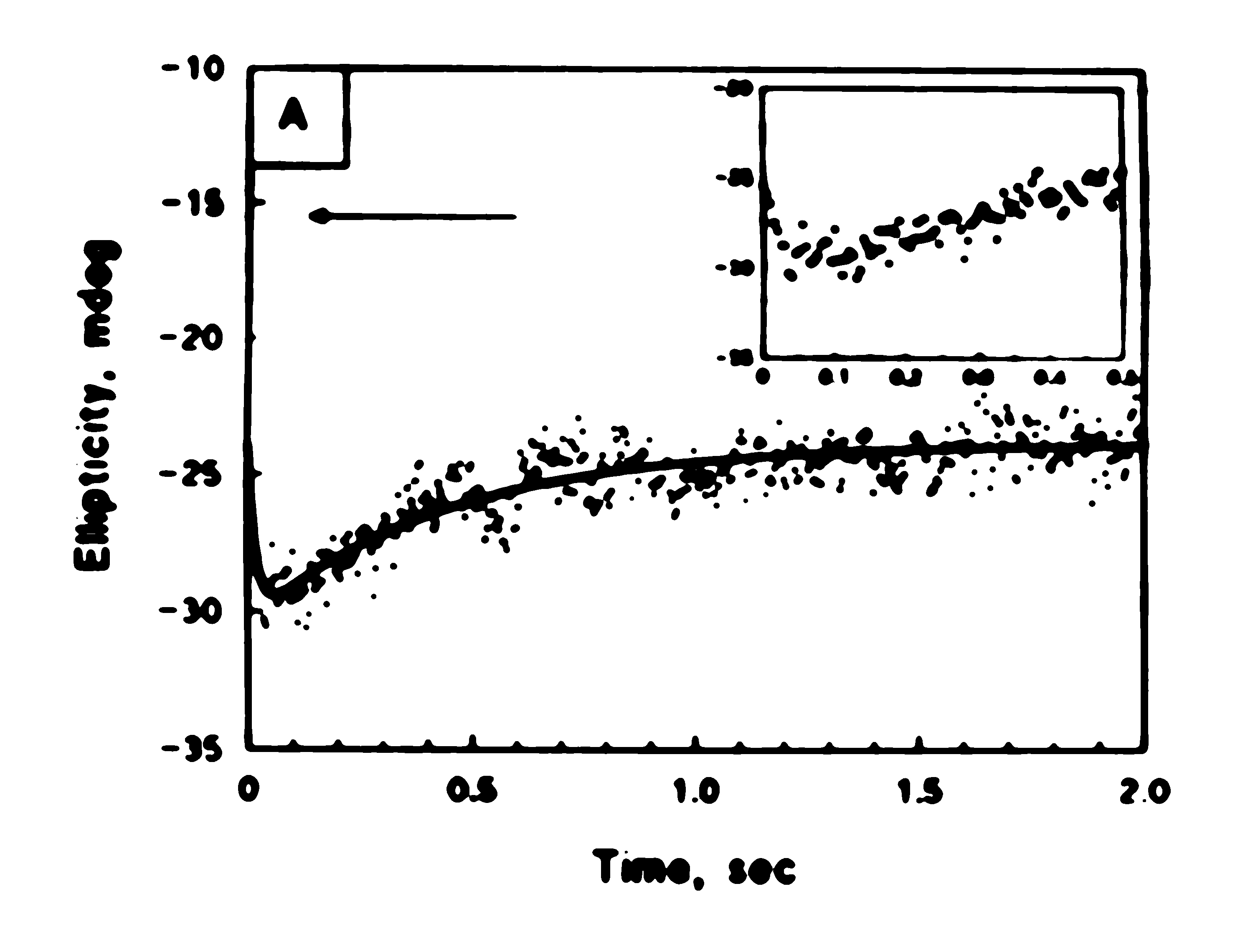| Domain | Summary of main contributions | |
| Enzymology | -
First optical and chemical identification of enzyme-bound intermediates
in the catalytic cycle of bacterial tryptophane synthase (TSase). - Functional and structural properties of omega- complemented beta-galactosidase |
 |
| Immunochemistry |
-
Design and application of ELISA-based methods for measuring the
affinity and rates of association and dissociation of a monoclonal
antibody and its cognate antigenic protein in solution. - Design of a pulsed immuno-labelling method for studying protein folding and its application to the folding mechanism of reduced hen lysozyme. |
 Lysozyme epitopes (yellow-red and green-blue) monitored kinetically |
| Mechanisms of protein folding |
- First demonstration of the existence of autonomously folding regions (currently named "domains") in large proteins. - First identication and characterization of a sequence of intermediate steps in the folding of the beta-subunit of tryptophane synthase, thus demonstrating that protein folding does not obey a simple "two state model". - First identification and characterization of an early folding intermediate, named the "pre-molten globule", resulting from the very rapid hydrophobic collapse of the polypeptide chain. - Demonstration that the refolding of an unfolded protein can proceed through alternate pathways. - Characterization by fast kinetics methods of the secondary structure of early intermediates formed within the first 4 milliseconds of the folding process. - Demonstration that the recovery of native protein during a renaturation process depends on the kinetic competition (nowadays named "kinetic partitioning) between refolding and aggregation. |
 Kinetics of lysozyme folding as seen by far UV circular dichroism |
| Mechanisms of protein aggregation | - Demonstration that the aggregates formed during protein renaturation result from native-like, yet illegitimate, specific interactions between folding intermediates. Rather than involving distinct regions of a unique polypetide chain as in productive folding, they take place between distinct polypeptide chains, thus leading to insoluble multimers. |  Folding vs aggregation |
| Cell biology |
- Development of a procedure for the
isolation of a unique species of mouse chromoses, and its applications
to the mouse chromosomes X, Y and 21. This procedure is based on the
extraction o the chromosomes from mouse strains bearing multiple
Robertsonian translocations, followed by flow-cytometry sorting of the
desired chromosomes. - Development of a flow-cytometry-based method to quantify the endocytosis of ligands bound to membrane receptors on a cell-by-cell basis. |
 With P. Métézeau at cell-sorter |
| Technical developments | - Analytical ultracentrifugation: Development of a method for measuring the molecular weight of unfolded polypeptide chains in the presence of concentrated guanidinium-chloride. - Radioactivity imaging: Development in collaboration with Nobel laureate Georges Charpak of the Beta-Imager, an ultra-sensitive, very low background, radioactivity scanner for low energy radiation emitters (C14, H3, ...) specifically designed for biological research. - Fast kinetics monitoring of circular dichroism: Development, in collaboration with two french industrial companies (Bio-Logic and Jobin-Yvon), of a flow/stopped-flow rapid mixing device coupled to a spectrodichrograph. Among many other applications, this apparatus enabled us to monitor the kinetics of formation of protein secondary structures from as soon as 4 milliseconds after the initiation of the folding process. - Infrared spectroscopy: Development of a procedure to record the infrared spectrum of proteins using an ATR (Attenuated Total Reflectance) attachment, which greatly simplifies and improves protein infrared spectroscopy. - flow-cytometry: First implementation in France of a fluorescence-activated cell-sorter; design of a "vacuum concentrator" that enables in situ hybridization on samples directly sorted on a filter. |
 Working at the Beta-imager  |
| Industrial applications | - production of therapeutic proteins:
several industrial processes used to reactivate insoluble proteins
produced by genetically engineered cells are based on renaturation
protocols developed in our laboratory. - development of an anti-aging cosmetic product: invention of the use of liposomes to combat cell aging and development, in collaboration with Parfums Christian Dior, of the anti-aging cream CAPTURE for skin treatment. |
 |